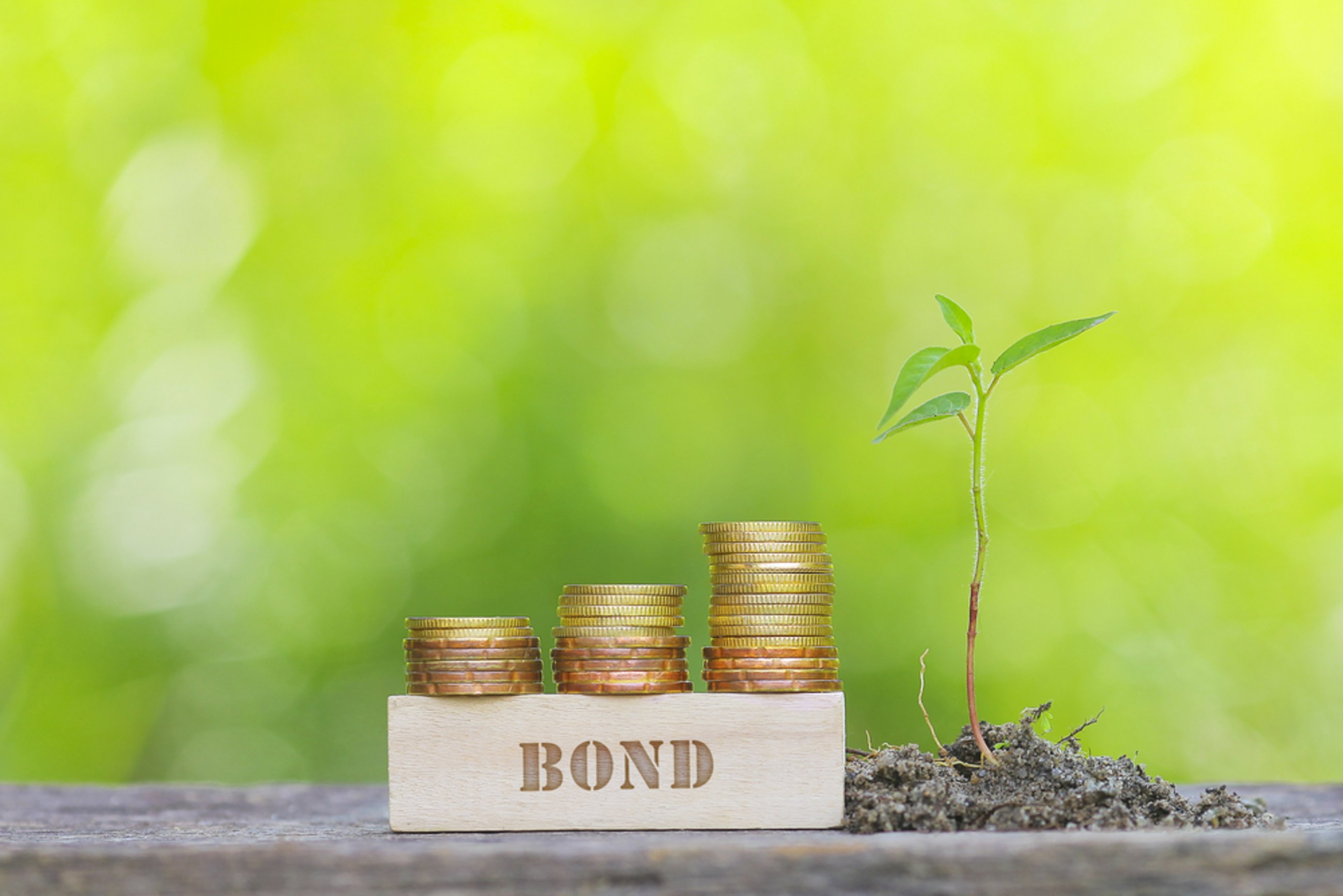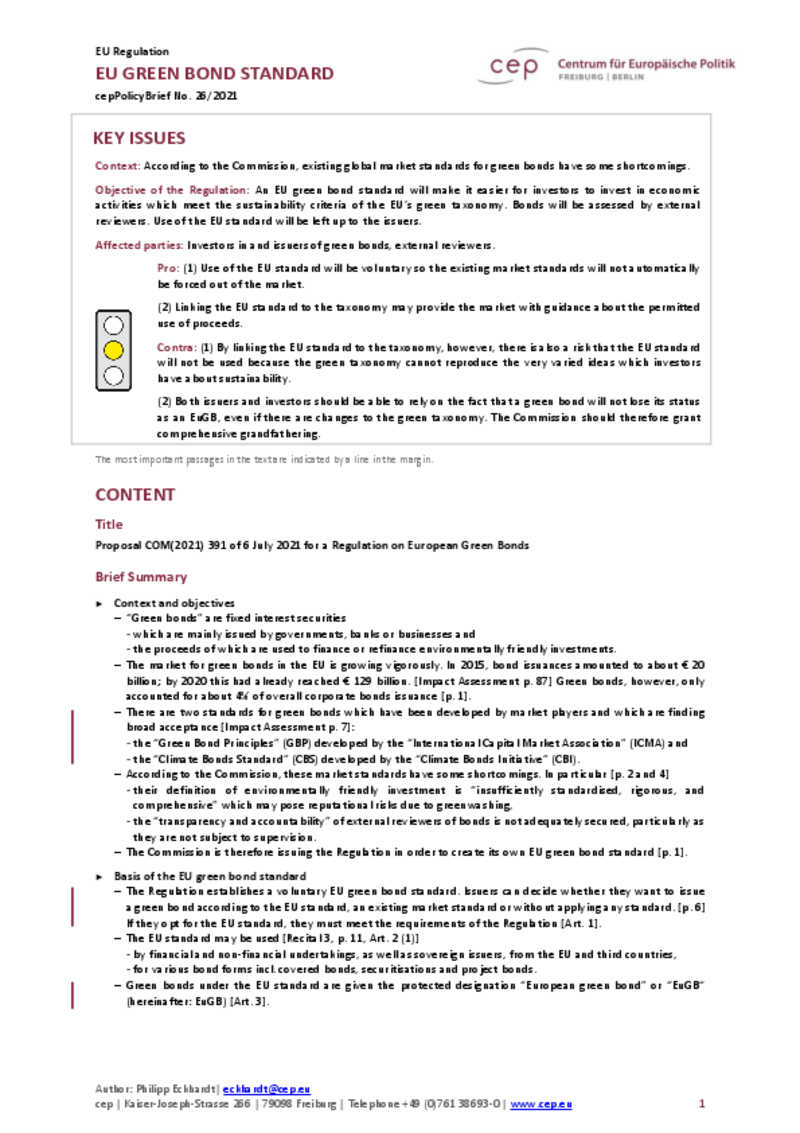
Financial Markets
EU Green Bond Standard (cepPolicyBrief COM2021 391)
cepPolicyBrief
In order to create clarity for investors, the Commission is planning a uniform EU standard (EuGB). In contrast to the global market standards, this standard should define more precisely in which "green" economic activities the bond proceeds may flow. The EuGB is using the green taxonomy as a reference. The Centrum für Europäische Politik (cep) has analysed the Commission's plans.
"The coupling to the green taxonomy with all its conceivable exceptions and extensions carries risks. The EU standard could be ignored if it does not meet investors' sustainability preferences. This is already shown by the open dispute over the classification of nuclear power and natural gas," criticises cep economist Philipp Eckhardt, who wrote the study. It is also important that both issuers and investors can rely on the fact that a green bond does not lose its status as a EuGB, even in the event of future changes to the taxonomy.
Eckhardt sees it as positive that the application of the EU standard is to remain voluntary. "This way, the existing and widely accepted market standards are not automatically completely displaced," says the cep expert. Eckhardt sees an advantage in linking to the green taxonomy in the fact that investors get at least a rough orientation on the use of the proceeds. The envisaged strict registration and supervision requirements for external valuers of green bonds could additionally strengthen investors' confidence in these bonds.
Download PDF
| cepAnalyse (publ. 11.30.2021) | 217 KB | Download | |
 | |||



